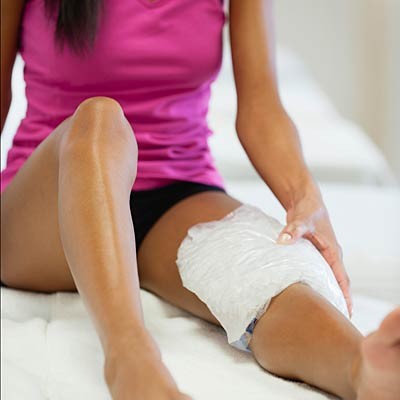
1
1. Strengthen your butt
We know from research that knee injuries, including common Anterior Cruciate Ligament (ACL) tears, can occur when large hip muscles are weak. ACL tears, which are eight times more likely in women athletes, have been shown to lead to other cartilage tears and to correlate with knee arthritis later in life.
As a society, our butt muscles are weak. When the main butt muscle (gluteus maximus) is weak, it causes the pelvis to drop and the upper thigh bone (femur) to fall inward. This imbalance creates painful downward stress on the hip, knee and ankle every time you take a step.
2. Stretch the muscles that support your knees
When butt muscles atrophy or become imbalanced because we tend to sit much of the day, the hamstrings and hip adductors (inner thigh muscles) also overwork — to compensate for the underdeveloped gluteus maximus — resulting in compressive force on the knee joint. By stretching out these support muscles, you decrease the chance that they’ll get tight and cause muscle imbalances. So remember the complementary two-fold process: As you strengthen naturally weak muscles like the glutes, also stretch supporting muscles like the inner thigh muscles.
3. Tone your core muscles
Abdominal weakness will cause your pelvis to tilt forward, creating excessive low-back curvature and shifting the leg bones inward. You can experiment with this yourself: Over-arch your back and notice how your legs and knees want to roll in toward the midline of the body. Then flatten your back and notice how the opposite movement occurs at the legs.
Strengthening the core helps to keep your back in a neutral spine position and places the lower extremities — specifically the knees — in the best possible position for movement without joint compression.
4. Maintain a healthy weight
Being overweight makes men five times more likely (and women four times more likely) to develop knee osteoarthritis. New research shows that a 10% decrease in weight will result in a 28% increase in knee function (such as for climbing stairs and walking). Another study found that for every 11 pounds a woman loses, there is a remarkable 50 percent decrease in the risk of knee arthritis.
Why? Fat decreases muscle strength, and excess body weight adds strain to knee joints. In fact, there’s an inverse relationship between body weight and quadriceps muscle strength: the higher your body weight, the weaker your knee muscles.
5. Mind your feet
You may look great in three-inch stilettos, but keep in mind that high-heeled shoes increase the compressive force on your knee joints by 23%. Wearing heels also encourages tight calf muscles, another common cause of knee pain. A tight calf can pull the foot inward to a position called pronation, which essentially collapses the arch of the foot and causes the lower leg to roll inward, placing stress on the ankle and knee.
So embrace the flat shoe fashion trend and stretch out those calves. On the flip side, replace your workout sneakers frequently — every 300 miles, which could be three months or a year depending on your level of activity. This is a safe way to avoid wearing a shoe with poor cushioning support for your arches and joints.
For similar articles, read Physiotherapy.